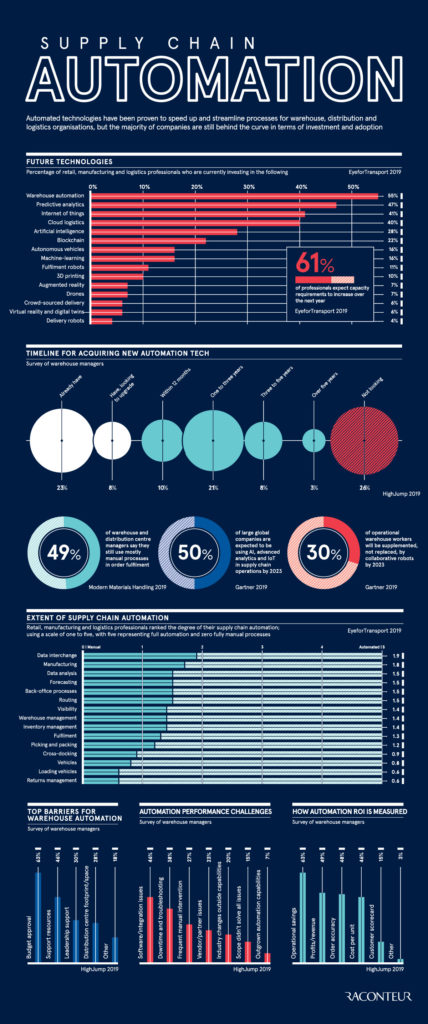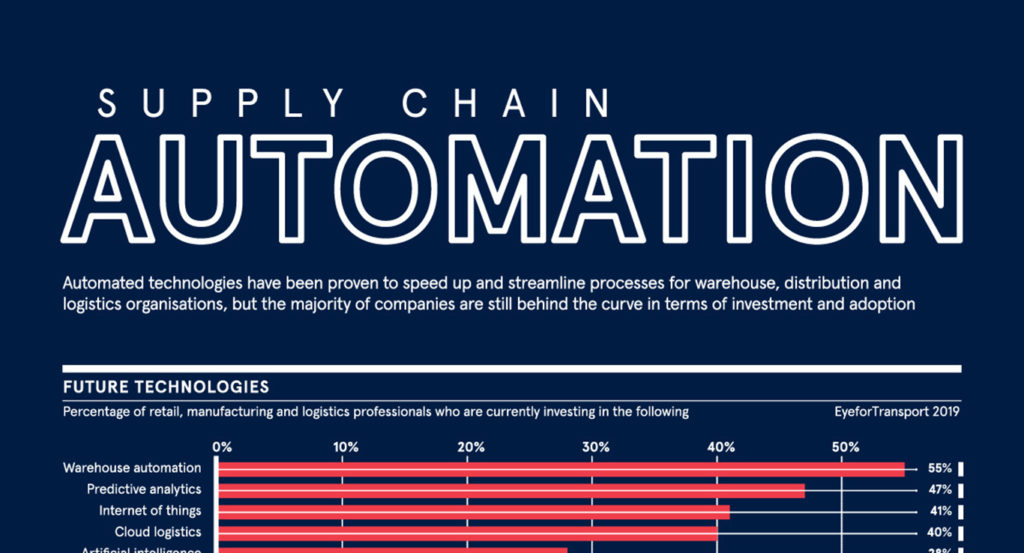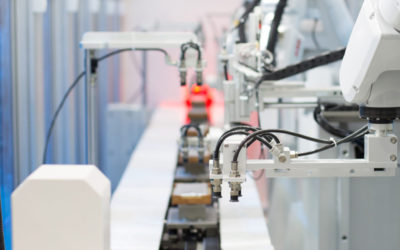The Future of Supply Chain Automation
on May 5, 2020 ByDorothy Neufeld
The Future of Supply Chain Automation
As Amazon continues to set the bar for efficiency by integrating an astounding spectrum of automation technology, it’s becoming increasingly apparent that traditional supply chain models are ripe for disruption.
For this reason, companies around the world are now rethinking their warehouse and distribution systems, with automation taking center stage.

Today’s infographic from Raconteur highlights the state of automation across global supply chains, while also providing an outlook for future investment.
Long Time Coming
Let’s start by taking a look at what supply chain technologies are priorities for global industry investment in the first place:
| Rank | Technology | % of Companies* Investing in Tech |
|---|---|---|
| #1 | Warehouse automation | 55% |
| #2 | Predictive analytics | 47% |
| #3 | Internet of things | 41% |
| #4 | Cloud logistics | 40% |
| #5 | Artificial intelligence | 28% |
Showing 1 to 5 of 15 entriesPreviousNext
*Based on survey of supply chain professionals in retail, manufacturing, and logistics fields
As seen above, warehouse automation has already received more investment (55%) than any other supply chain technology on the list, as companies aim to cut delivery times and improve overall margins.
Interestingly, other areas receiving significant investment—such as predictive analytics, internet of things, or artificial intelligence—are technologies that could integrate well into the optimization of supply chain automation as well.
Smoothing the Transition
While fully automated supply chains in most industries may still be a few years away, here is how companies are investing in an automated future today:
| Timeline For Acquiring New Automation Tech | % of Warehouse Managers Surveyed |
|---|---|
| Already have | 23% |
| Have, looking to upgrade | 8% |
| Within 12 months | 10% |
| One to three years | 21% |
| Three to five years | 8% |
| Over five years | 3% |
| Not looking | 26% |
According to the above data, over 70% have already integrated automation technology, or are planning to within the next five years. On the flip side, over a quarter of warehouse managers are not currently looking to integrate any new automation tech into their operations at all.
Adoption Rates and Growth
As supply chain automation gains momentum and industry acceptance, individual processes will have varying adoption rates.
Take order fulfillment, for instance. Here, only 4% of current operations are highly automated according to a recent survey from Peerless Research Group:
| Order Fulfillment Operations (Picking and Packaging) | Percentage of Respondents |
|---|---|
| Highly automated | 4% |
| A mix of automated and manual processes | 42% |
| Mostly or all manual | 49% |
| Not applicable | 5% |
Meanwhile, 49% of operations were primarily manual, illustrating potential for growth in this particular area.
It’s worth noting that other individual supply chain components, such as conveyor belts, storage, automated guided vehicles, and shuttle systems, will all have differing trajectories for automation and growth.
Post-COVID Supply Chains
The COVID-19 pandemic has shown us that complex supply chains can become fragile under the right circumstances.
As supply chains see increased rates of automation and data collection becomes more integrated into these processes, it’s possible that future risks embedded in these systems could be mitigated.

